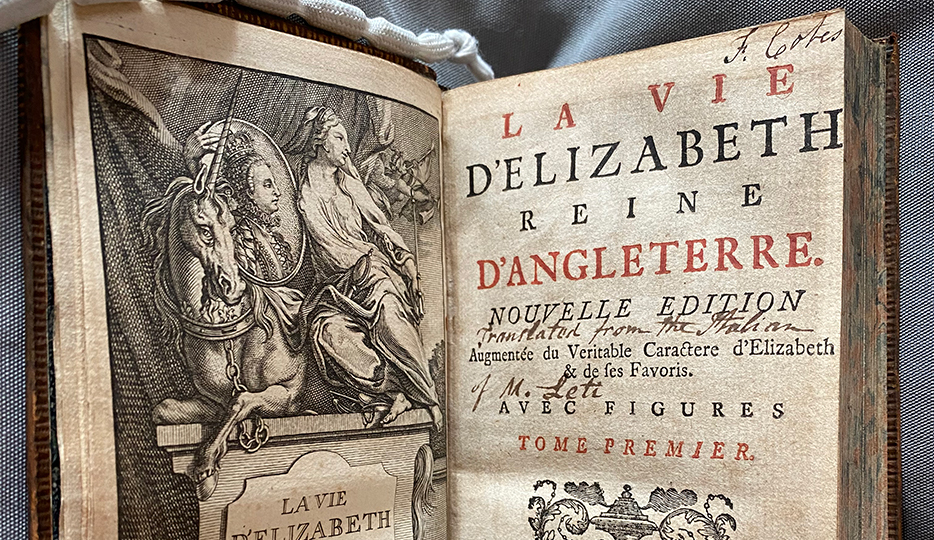#HERBOOK: Women book owners in the Gladstone’s Library Collections
Since the Library’s foundation in 1889, to maintain William Ewart Gladstone’s personal collection of over 20,000 books, it has established itself as very much an “historical” depository. Subsequent acquisitions, over the 130+ years since, have not only added current publications to the subject themes represented in the Gladstone Foundation Collection (even maintaining WEG’s original classification scheme), but have also sought out additional ‘old’ books from Gladstone’s own era (1809-1898). As a result, the Library today holds a great number of pre-1900 books, typically classed as ‘rare books’ – that is to say, books significant for both their historic printed texts and as representing material culture in their own right. In fact, the collections cover everything from medieval manuscripts, incunables, and pre/post 1800 printed material, to modern ‘special collections’ and a current circulating collection.
Pre-owned books often bring with them evidence of their unique provenance and ownership history, which can complement their potential to researchers. For this reason, the GladCat project (2006-2009) focused on cataloguing books from the Foundation Collection with inscriptions and marginalia relating to William Gladstone, and a digitisation project is currently underway for these same texts.
As our readers will have discovered, however, many of the Library’s older books also have marks relating to owners other than WEG. These marks might be an inscription gifting the book, a bookplate, or simply someone writing their name in the front. Wherever possible, we are working to identify these owners – via genealogical research and library detective work! – and to add this information into our catalogue records. Since March is Women’s History Month, it seemed fitting to focus a spotlight on some of the women book owners recently identified within the collections.
Jane Boates
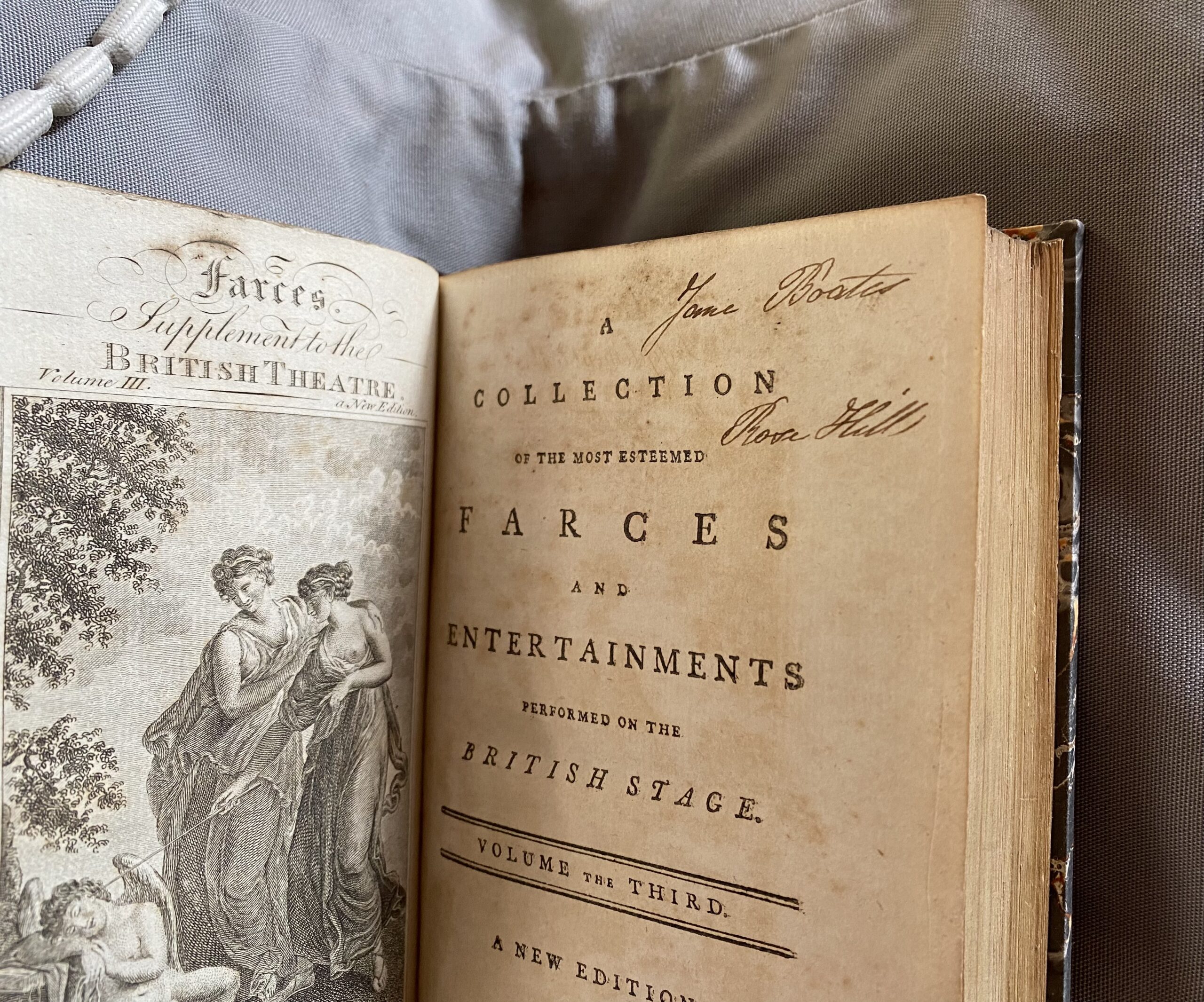
This inscription, belonging to Jane Boates (1773-1860) of Rose Hill, Erbistock, was written at the head of the title page in each of six volumes of A collection of the most esteemed farces and entertainments performed on the British stage (Edinburgh, 1788) [R 32/6]. Boates was the daughter of Roger Kenyon of Cefn Park, Ruabon, whose surviving will reveals a personal book collection – all of which he bequeathed to his sons! However, after marrying merchant Henry Ellis Boates, Jane seemingly set about accumulating her own books. Subsequent generations of the Boates family became significant benefactors in Erbistock, funding the building of St Hilary’s Church. Rose Hill, itself, also still exists.
Frances Maud Kingsley
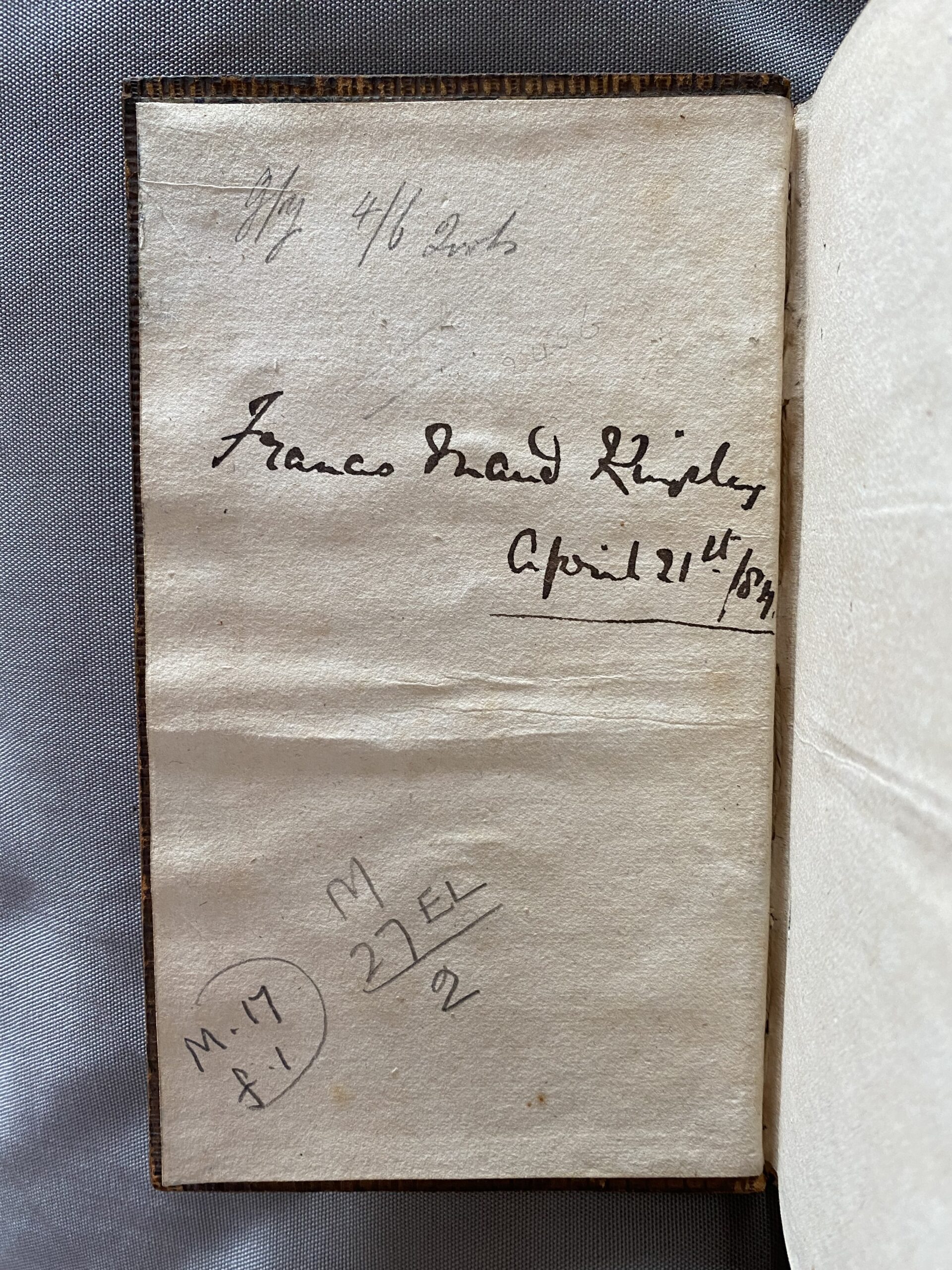
Sometimes a book displays several ownership inscriptions or plates, revealing how the text has moved around during its lifetime. These two volumes of a French translation of Gregorio Leti’s La vie d’Elizabeth reine d’Angleterre (The Hague, 1741) [M 27 El/2] record three former owners.
Frances Maud Kingsley (1860-1907) was a doctor’s daughter from Stratford upon Avon. It is possible that she was a keen book collector, as her inscriptions indicate ownership in 1884, by which time the books were over 140 years old. The volumes had also travelled a considerable distance to reach her in the Midlands, since the previous ownership marks, one dated 1802, relate to Reverend Henry Cotes (see the book plate below left) and ‘F. Cotes’ (inscription below right), who was likely his wife or daughter (both called Frances).
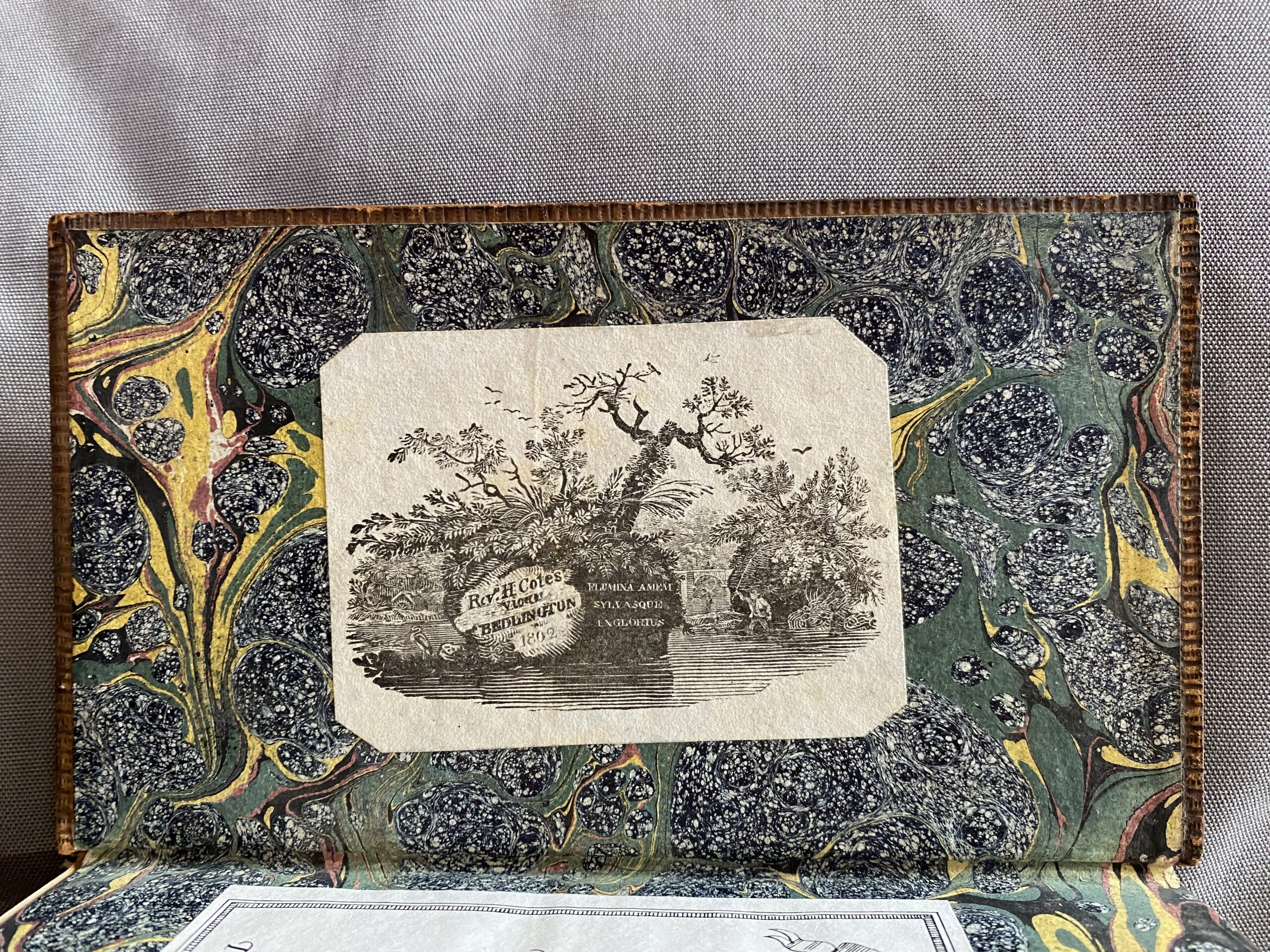
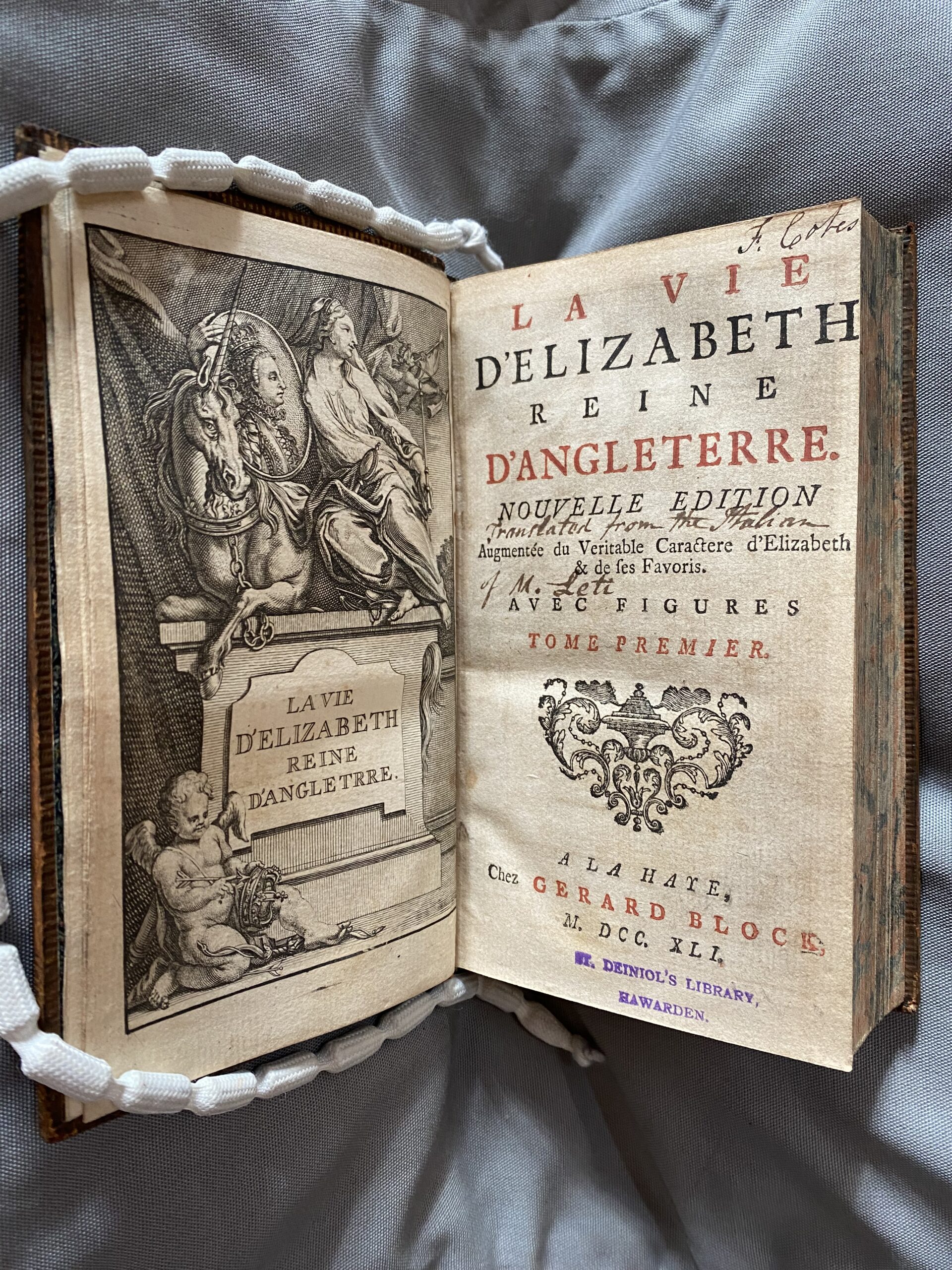
Cotes was vicar of Bedlington in County Durham, and bequeathed his books to his sons, Henry and John, on his death in 1835. Both men died within ten years of their father, some four decades before Frances Maud Kingsley acquired the volumes.
Eliza Gulston

Many former owners added bookplates rather than handwritten inscriptions to personalise their books. This example, in an edition of Memoirs of several ladies of Great Britain by George Ballard (Oxford, 1752) [M 20.9/2], related to the personal library of Eliza Stepney Gulston (1769-1858).
Eliza’s father, Joseph, was a wealthy book and print collector, and her mother, Elizabeth Bridgetta Gulston (neé Stepney), was an artist, astronomer and poet. Joseph’s will reveals that his own books were sold after his death (perhaps for financial reasons, since both Eliza and her brother were still minors at the time and his wife had pre-deceased him). However, his daughter evidently inherited his passion for book-collecting, as many examples of texts with her bookplate survive in various collections today. Eliza Gulston’s bookplate matches a crest stamped on an armorial binding for two books owned by her mother, whose own father was Sir Thomas Stepney.[1] A memorial plaque to Eliza can be found in the Ealing Parish Church of St Mary.
Lady Bedingfeld
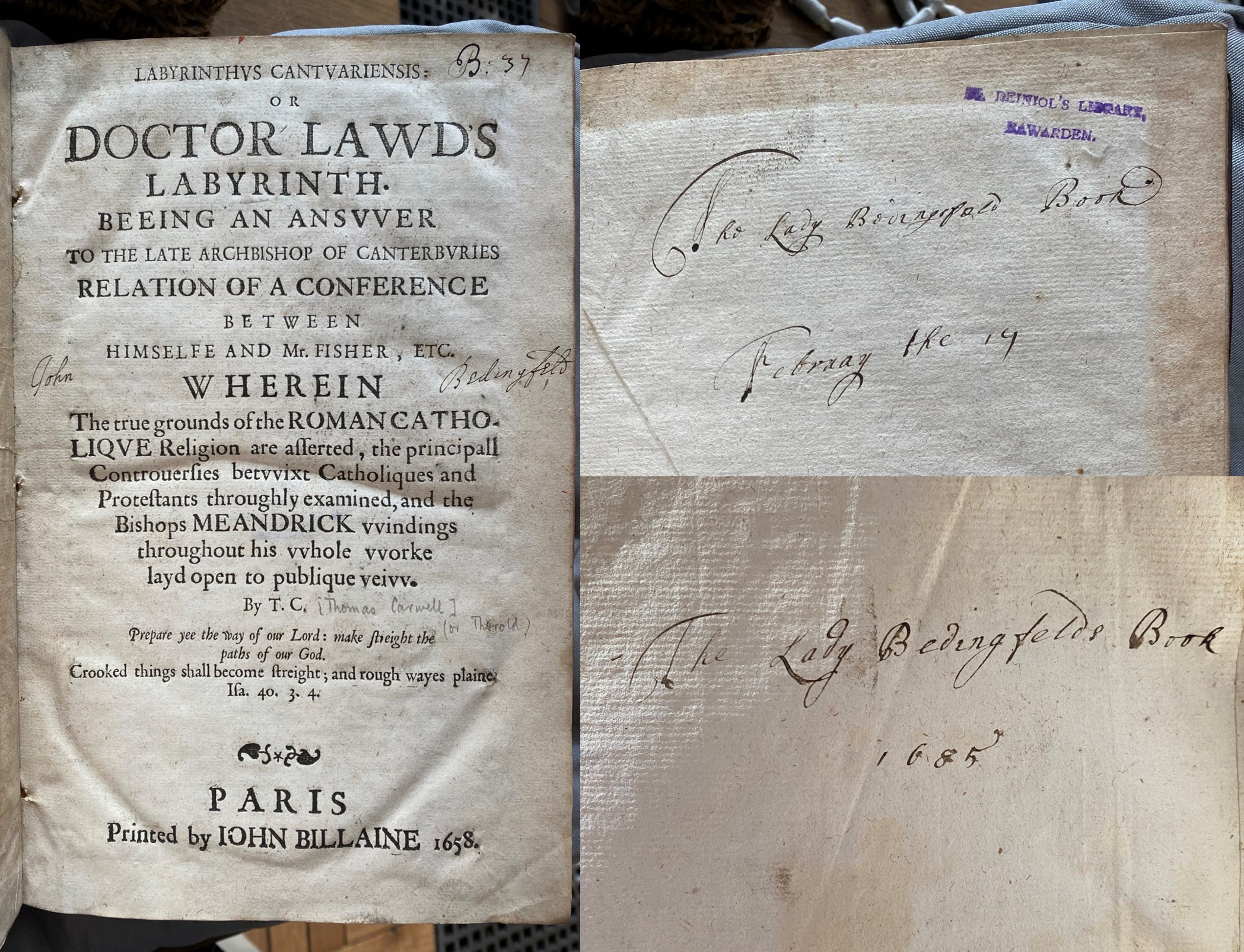
“The Lady Bedingfeld”, to whom this 1658 copy of Thomas Carwell’s Labyrinthus cantuariensis : or, Doctor Lawd’s Labyrinth [E 14/27] belonged, inscribed her name on both the front and back flyleaves. This may reflect the considerable value of books in the seventeenth century. The Lady concerned was possibly Lady Margaret Paston Bedingfeld (1618-1703), whose birth family’s correspondence famously survives and is a key primary source for life in fifteenth-century England.[2] She was married to Henry Bedingfield, 1st Baronet of Oxburgh Hall in Norfolk (now owned by the National Trust). Although we cannot be certain of exact provenance, the book’s subject matter – relating to the Protestant and Catholic faiths – would certainly have been pertinent to Lady Margaret. The Bedingfield family had remained staunch Catholics throughout the turbulent years of the Reformation and the reigns of both Mary Tudor and Elizabeth I.
Amelia Waddell
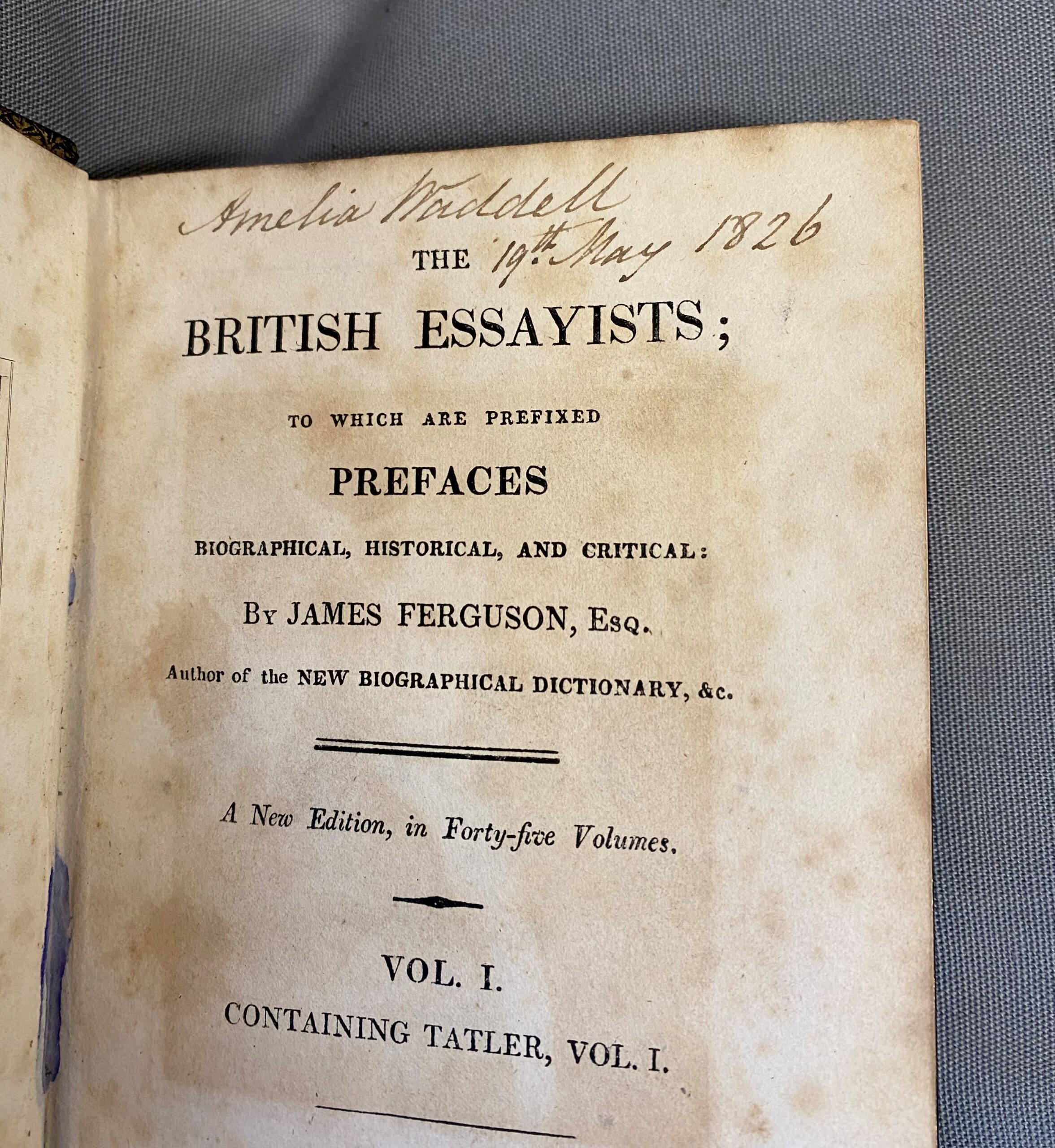
Surgeon’s daughter Amelia Waddell (1809-1872) was born in Westminster and married Sir Keith Alexander Jackson, of the 4th Light Dragoons, in 1834. She may have received these 45 volumes of The British essayists (London, 1819) [R 16/2] as a birthday gift, since the date of the inscription, 19th May 1826, would have been her seventeenth birthday. Following Amelia’s death, the books evidently passed to her son, Keith George Jackson, as each volume also includes a bookplate for ‘Sir K. G. Jackson, Bart., January 1874’. As well as owning books, Amelia penned extensive travel diaries – both as a child and in later years – which survive today in the Royal Geographical Society Archive.[3]
Martha Stratford
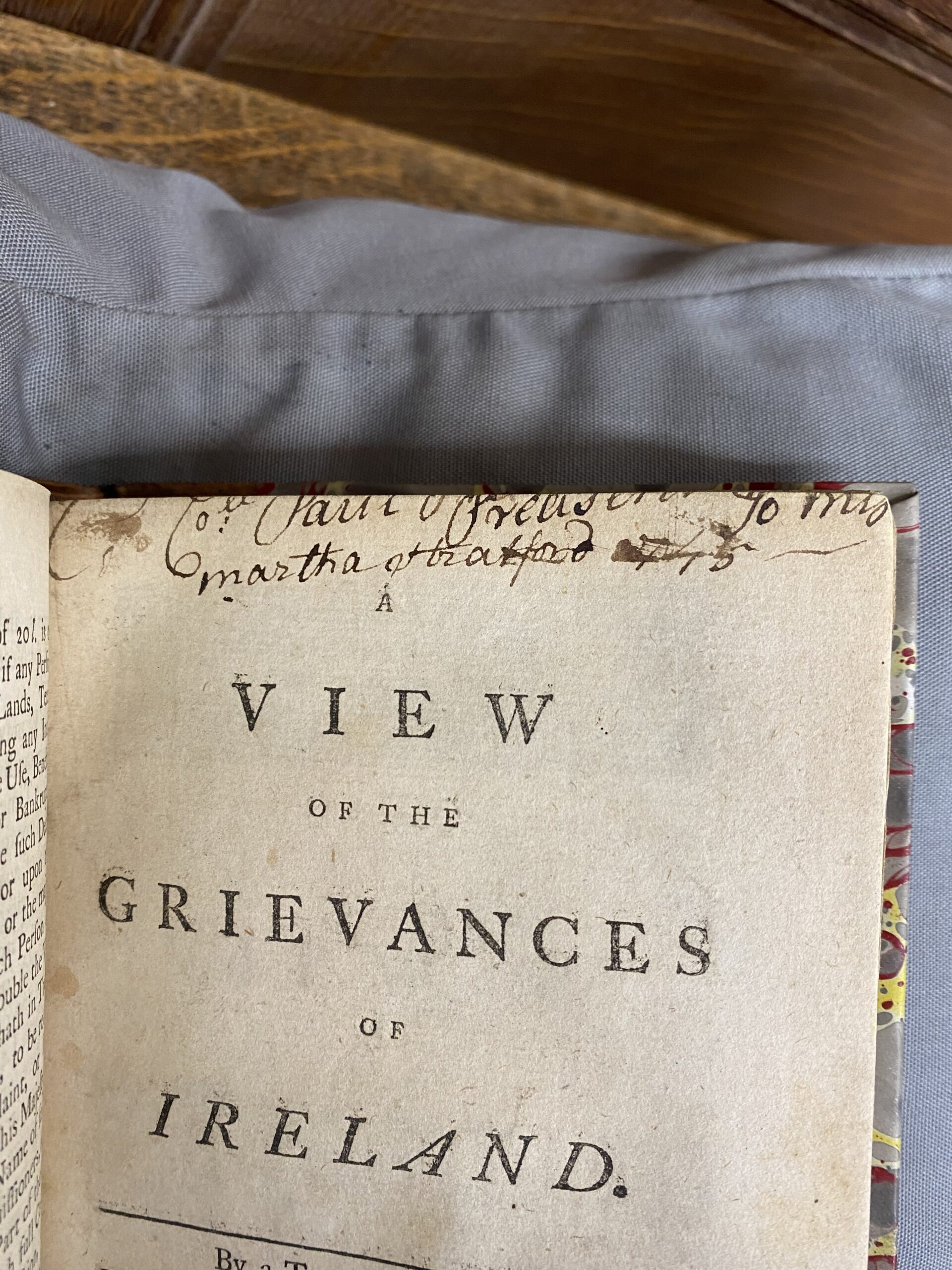
Martha Stratford, neé O’Neale (1706-1796) was the daughter and heiress of the Ven. Benjamin O’ Neale (Archdeacon of Leighlin, County Carlow, Ireland) and his wife, Hannah Paul. She married John Stratford, 1st Earl of Aldborough. At some point in the history of this 1745 second edition copy of A view of the grievances of Ireland (printed in Dublin) [M 46.3/4], the text was rebound, and the pages trimmed, rendering the full inscription illegible. However, the name “Paul” indicates a connection to Martha’s maternal family, and the book appears to have been inscribed as a gift to her, rather than signed by Martha herself. Notably, she is referred to as “Mrs Martha Stratford”, since her daughter shared the same name.
As research continues into the former book-owners found in the Library’s collections (both male and female), we hope to unearth the personal histories of many more of our books and to add this information to the library catalogue. Watch our social media (Facebook/Instagram/Twitter) for progress updates!
Isobel Goodman, Assistant Librarian
[1] | British Armorial Bindings (utoronto.ca)
